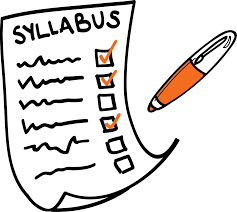Section outline
-
CSE311: Database Management System
-
Instructor:
Rubaiya Hafiz
Senior Lecturer
Department of Computer Science & Engineering
Daffodil International University
rubaiya.cse@diu.edu.bd
01914194973
Room#416, CSE building, Department of CSE, Daffodil International University
-
-
Welcome Message
Dear Students,
Welcome to the 2020 Fall Semester!
I can’t wait to see all your smiling faces! I am here to support you every step of the way. I encourage you to make the best use of your time here. Remember to make it a great year, together we will make a remarkable journey.
Rubaiya.
-
Week 1
-
Introduction To BLC
-
-
Week 2
-
Lecture 1.1
Learning Outcome:
- Database Introduction,
- Database History,
- Flat File Database,
- Data and Information,
- Database Applications
Lecture 1.2
Learning Outcome:
- Problems in Conventional File Processing System,
- Difficulty in accessing data,
- Integrity problems,
- Atomicity problems,
- Security problems
Reference Book Chapter:
- Fundamentals of Relational Database Management System, S. Sumathi and S. Esakkirajan Chapter 1
- Database System Concept, Silbertz, Korth and Sudarshan Chapter 1
-
Section O-1(EVE) Lecture 1 Meet discussion URL
-
Section O-1(EVE) Lecture 2 Meet discussion URL
-
Section O-2 Lecture 2 Meet discussion URL
-
Forum Discussion Question:
Discuss a real-life scenario where you have to work with a Conventional File Processing System. Now write the advantage and disadvantages on the basis of your experience.
-
-
Week 3
-
Lecture 3 Google meet discussion Section O2 URL
-
Lecture 4: Meet discussion Introduction To ERD Section O-2 URL
-
Week 4
-
Lecture 5: Meet discussion Introduction To ERD Section O-2 URL
-
Lecture 5: Meet discussion Introduction To ERD Section O-1 (Eve) URL
-
Lecture 5: Meet discussion Scenario To ERD Section O-1 (Eve) URL
-
Scenario to ERD Conversion Section O-2 (Google meet discussion) URL
-
Week 5
-
QUIZ 1
-
-
Scenario to ERD Conversion Section O-2 (Google meet discussion) Part 2 URL
-
Construct an ER Diagram for Company having the following details :
- Company organized into DEPARTMENT. Each department has unique name and a particular employee who manages the department. Start date for the manager is recorded. Department may have several locations.
- A department controls a number of PROJECT. Projects have a unique name, number, and a single location.
- Company's EMPLOYEE name, ssno, address, salary, and birth date are recorded. An employee is assigned to one department, but may work for several projects (not necessarily controlled by her dept). Number of hours/week an employee works on each project is recorded; The immediate supervisor for the employee.
- Employee's DEPENDENT are tracked for health insurance purposes (dependent name, birthdate, relationship to employee).
-
-
-
Learning ERD Symbols
Its a kind of game. You can drag all text buttons below and put them on the symbol images. You have to match symbols with an appropriate name. After matching you can submit it.
-
-
-
Consider you are planning to build an Information system as one of your Lab project. On the initial day, you have to describe the system to everyone so that your classmates as well as your course teacher could understand whatever you are going to implement.
- Think about a system you want to develop.
- Choose an appropriate name for your system.
- Now prepare a document that describes the overall functionality of your system. This description must contain the description of objects with properties that you need to implement
- Draw ERD model for your system
-
-
Week 6
-
Google meet discussion on ERD to schema Section O-2 URL
-
Google meet discussion on ERD to schema Section O-1 (EVE)---Part 1 URL
-
Google meet discussion on ERD to schema Section O-1 (EVE)---Part 2 URL
-
Week 7
-
Syllabus: ERD,
Relational Schema,
SQL
Instructions:
1. Time: 45 Minutes. After that Your attempt will be submitted automatically.
2. Go to the next page once you have marked all the questions on the current page. Because once you go to the next page, you do not find options for the previous pages.
-
Lecture 10 Meet discussion Section O-5 URL
-
MIDTERM EXAM
-
-
-
-
CSE311 Midterm Exam Question paper
Note: (Only For question Q1(a): You have to write the answer of question Q1(a) in the doc file or any text editor. No answer will be accepted if you write in hand and then submit it.
For other questions, you can write by hand or in the editor. Anyone you chose.
-
-
Week 9
-
Transaction Part 2 Meet discussion O-1(EVE) URL
-
FINAL EXAM
-
Google Form. You Can Submit Only PDF file.
While Submitting, Please Check your Section Carefully.
-
Overlap Exam Assignment

 Topics Covered in Final exam:
Topics Covered in Final exam: